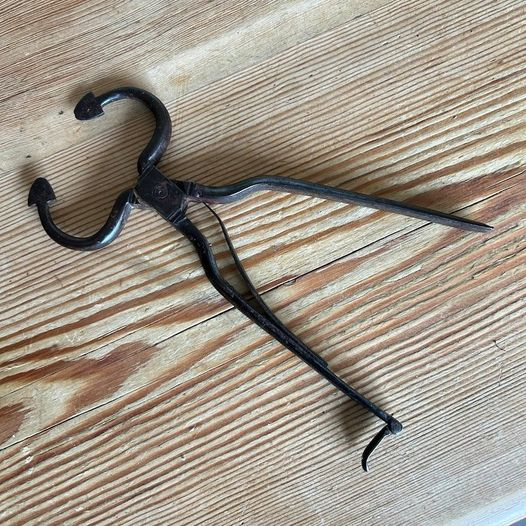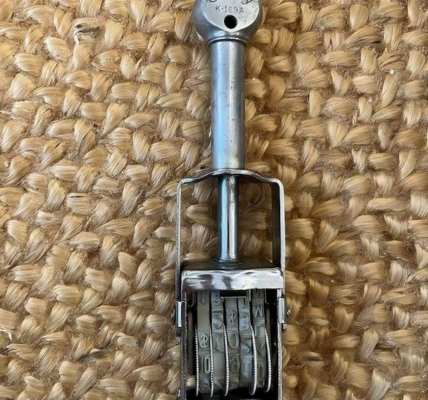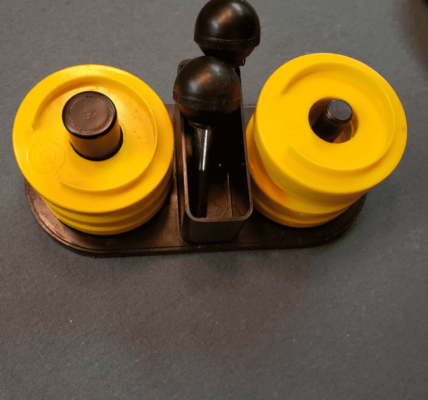Iron sugar nippers are a relic of a bygone era, harking back to the 17th and 18th centuries when sugar was considered a luxury. Long before sugar became readily available in granulated form, these sturdy tools were essential in households across Europe and America. Used to break down hardened sugar loaves into manageable chunks, sugar nippers were more than just kitchen tools – they were symbols of status and wealth. Let’s dive into the fascinating history of iron sugar nippers and their enduring legacy.
What Were Iron Sugar Nippers?

In the 1600s and 1700s, sugar was sold in large, conical loaves that were difficult to break down by hand. The sugar was solidified into hard, dense forms, making it impossible to simply scoop or sprinkle as we do with modern sugar. Enter the iron sugar nippers – robust, scissor-like tools designed specifically to tackle these sugar loaves.
Typically made from cast iron, sugar nippers had long handles that gave the user leverage to snap off pieces of the sugar. The sharp, pointed blades would grip the loaf firmly, allowing the user to “nip” off a portion of the sugar. These tools ranged from simple, functional designs to more ornate, decorative versions found in the homes of wealthier families.
The Importance of Sugar Nippers in 17th and 18th Century Households
During the 17th and 18th centuries, sugar was an expensive commodity, often only available to the affluent. Wealthier households would use sugar nippers to carefully break off small portions of sugar for sweetening tea, coffee, or baked goods. Since sugar was costly and used sparingly, sugar nippers were indispensable in controlling the amount used.
Interestingly, the size of the sugar nipper’s blades could vary, depending on the household’s needs. Some had smaller blades for more delicate nipping, while others had larger, more powerful nippers for cutting off big chunks of sugar. This versatility made them a critical kitchen tool not only for households but also for commercial enterprises like bakeries and apothecaries.
How Sugar Nippers Were Used
Using sugar nippers required a bit of strength and skill. The user would position the sharp blades around a portion of the sugar loaf, then squeeze the handles tightly to break off a chunk. It was a precise method of cutting sugar, allowing individuals to control the size of the sugar piece they needed.
For many, it became a ritualized part of daily life – preparing sugar for tea or a sweetened dish with the satisfying “snap” of the nippers became an ingrained practice in households. Larger establishments like bakeries and confectioneries also relied heavily on these tools, as sugar was a key ingredient in many of their products. Even apothecaries used sugar nippers to sweeten medicinal remedies, making sugar more palatable to their patients.
The Decline of Sugar Nippers in the 19th Century

As the 19th century progressed, sugar production became more industrialized, leading to the introduction of granulated sugar. This new form of sugar was far easier to package, store, and use, making sugar nippers increasingly obsolete. Granulated sugar also drove down the cost, making it more accessible to the average household.
By the late 1800s, the widespread availability of granulated sugar meant that the once-essential sugar nippers were no longer needed in most homes or businesses. They quickly fell out of favor, and many were relegated to storage or thrown away as people embraced the convenience of pre-processed sugar. Despite this, the historical significance of sugar nippers remained, as they were closely tied to an era when sugar was a symbol of luxury.
The Legacy of Iron Sugar Nippers
Though sugar nippers faded from everyday use, they left a lasting legacy in culinary history. Today, these vintage tools are highly sought after by collectors and museums. Many admire their craftsmanship, especially the more ornate versions with decorative handles and intricate designs. They are appreciated not only for their function but also for their aesthetic value.
For historians and enthusiasts of culinary history, iron sugar nippers represent an important chapter in the evolution of food preparation. They stand as a reminder of a time when even simple kitchen tools were built to last – made with a blend of form and function that we rarely see today. Their robust design and enduring craftsmanship make them prized antiques, and they are often displayed in museums and collections dedicated to the history of food and cooking.
Sugar Nippers as a Symbol of a Bygone Era

In addition to their functional role, sugar nippers are symbolic of a time when sugar was a prized possession. The very act of using them highlighted how precious and rare sugar once was. Unlike today, when sugar is readily available in every grocery store, people in the 17th and 18th centuries had to carefully manage their sugar supply.
Owning a pair of sugar nippers was a subtle status symbol. In wealthier homes, the more decorative and ornate the nippers, the more they symbolized affluence. Simpler, more utilitarian nippers were found in less affluent households, but they were just as essential. The evolution of sugar nippers from a common kitchen tool to a collectible antique mirrors the broader changes in society’s relationship with sugar.
Conclusion: The Enduring Appeal of Iron Sugar Nippers
Although iron sugar nippers are no longer a kitchen necessity, they remain a fascinating piece of culinary history. These tools were not just functional; they were a reflection of the times, a symbol of luxury, and a testament to the ingenuity of the era. Today, vintage sugar nippers offer a glimpse into a time when sugar was scarce, and even the tools used in the kitchen were crafted with care and durability.
Collectors and history enthusiasts continue to appreciate the artistry and historical significance of sugar nippers. Whether displayed in a museum or a private collection, they serve as a tangible reminder of how far we’ve come in terms of food production and consumption, while also celebrating the beauty of a tool designed for both practicality and elegance




